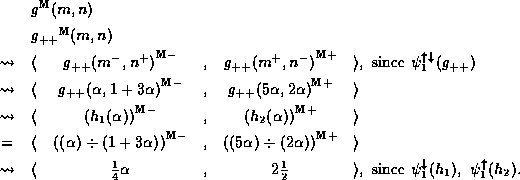




Next: 3.3.27 Partial Binary Functions
Up: 3.3 Linear Interval Arithmetic
Previous: 3.3.25 Binary Functions: One-Step Method
Consider the division function,  ,
,
The evaluation of  ,
proceeds as follows:
The sign of
,
proceeds as follows:
The sign of  and
and  are determined
by the arguments and the relationship with the
second derivative of
are determined
by the arguments and the relationship with the
second derivative of  :
The corresponding evaluation with constant intervals
produces a noticeably larger result:
Similar behaviour may be observed near the origin with the general
exponentiation function,
:
The corresponding evaluation with constant intervals
produces a noticeably larger result:
Similar behaviour may be observed near the origin with the general
exponentiation function,  .
.





Next: 3.3.27 Partial Binary Functions
Up: 3.3 Linear Interval Arithmetic
Previous: 3.3.25 Binary Functions: One-Step Method
![]() ,
,
![]()
![]()
![]()

![]()
![]()
![]()